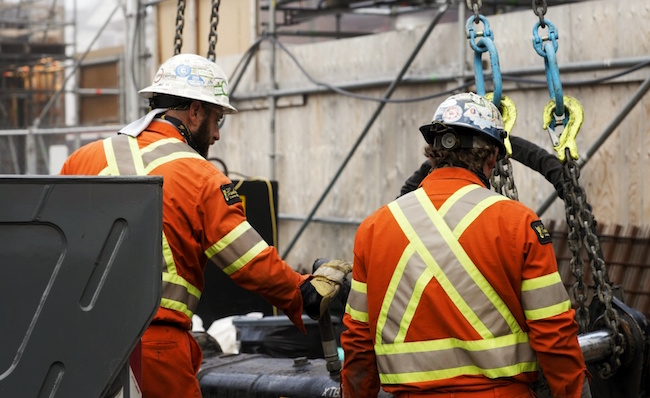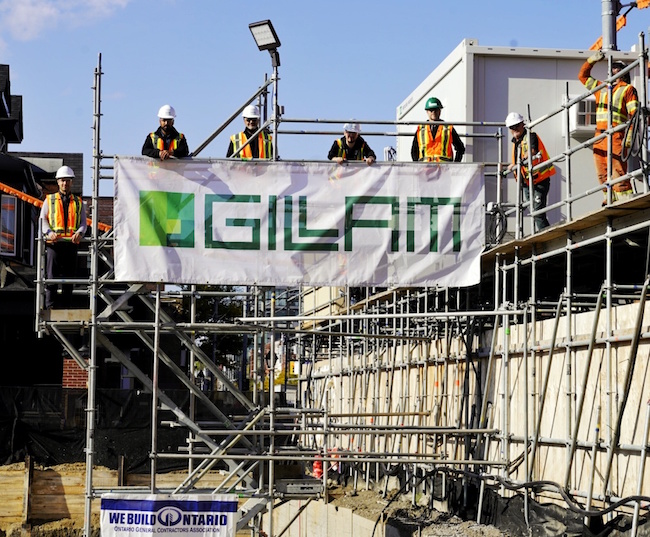
Safety is not proprietary: Five ways to build a stronger safety culture
By Craig Lesurf
Health & Safety Leadership
Commitments to safety are most robust when integrated into a company’s culture and routines. PHOTO: Gillam
The COVID-19 pandemic has impacted us all and has changed the way we act and interact. Both at work and in everyday life, we employ a hierarchy of controls, from social distancing and virtual commuting, to increased sanitization measures and face coverings.
As leaders, ensuring every worker safely returns home at the end of the day is constantly at the forefront of our minds and takes continued due diligence. With Safety Week getting underway, now is the time to develop a suitable plan for your company to achieve maximum safety awareness, educate and protect against COVID-19, and significantly reduce the number of incidents, accidents and near misses.
Safety Week is an industry-wide event dedicated to educating and increasing awareness in the workplace across Canada and the United States. It provides an opportunity to examine and reinforce your commitment to safety. This commitment is most robust when it is woven into an organization’s culture and is visible in everyday routines, policies and processes.
This year, Ontario will also mark a new day designated to promote safety in the workplace. Bill 152, Occupational Safety and Health Day, received royal assent April 27. The bill proclaims the first Tuesday in May each year as Occupational Safety and Health Day, recognizing the importance of supporting and nurturing a safe and healthy culture in every workplace. This year, it falls on Tuesday, May 4, so let us all use this day as an opportunity to promote workplace safety and health through the teaching of health and safety rights, responsibilities, and prevention measures.
These five steps will help you reinforce the importance and value of safety across your organization and help improve your safety culture:
1. COMMIT TO SAFETY
Bring the commitment to safety to a personal level by asking company leaders to consider these questions:
- How engaged am I in company safety programs?
- How can I increase my engagement levels with project teams?
- Can I make a difference in our workers’ safety by engaging more?
- Does our company empower me to make a difference in workplace safety?
- How do I influence our company and my leadership?
Along with putting the questions to leaders, have them pledge something new they believe will help create an injury-free workplace. Their pledges should become action plans shared with team members, stakeholders and leaders.
Meanwhile, if you are a leader in your company, ask yourself: “What can I do to be a better leader? What can I do to engage all workers on our project sites and offices? How do I enable others to become leaders and adopt a stronger culture of safety?”
2. VISIT PROJECT SITES AND OFFICES
The commitment to safety begins at the highest levels.
To showcase that safety promise, executives, management and leaders at every level should make safety-specific video calls and virtual tours of each job site and, if possible, in-person visits throughout Safety Week.
Maximize interactions with job site personnel by meeting, either virtually or in-person, with workers and identify daily workloads, responsibilities and concerns. Follow COVID-19 protocols while on location, attend safety-specific meetings and briefings, complete a job site safety audit/inspection, engage in safety-specific discussions with forepersons and other crew members.
This is also an ideal opportunity to solicit feedback from workers on site conditions, COVID-19 protocols, safety matters and company values. Show visible leadership by putting questions about what’s working and what could be improved directly to those on-site.

Gillam plans to roll out two new safety programs during Safety Week 2021. PHOTO: Gillam
3. SAFETY EVALUATION
Challenge your teams to confidentially assess how the project measures up in terms of safety performance. During the evaluation, focus on safety culture, COVID-19 protocols and education, team member competency/training, communications, compliance with regulations, and subcontractor performance.
If you have not done so already, use Safety Week to put additional safety plans in motion and begin or further your efforts to work toward achieving “best in class” status. At Gillam, for example, we are rolling out two new programs — “Don’t Walk By” and “Rewarding Good Behavior” — aimed at increasing awareness of on-site situations being handled correctly or incorrectly. As valued partners, trade personnel will also be engaged and participate.
4. HOLD EVENTS THAT FOCUS ON SAFETY
Several organizations offer events and activities promoting safety and health throughout the first week of May. The North American Occupational Safety and Health (NAOSH) Week and Construction Safety Week, for example, put on a virtual safety roadshow, inviting vendors to showcase new tools and safety equipment, while holding safety training and education sessions on a range of topics. Share photos of weekly activities on social media using hashtags such as #SafetyWeek, #ConstructionSafetyWeek, #SafetyandHealthWeek.
Safety education events are highly productive and beneficial. Safety leaders from across North America share toolbox talks, educational materials and best practices. Sharing safety best practices — even with your competitors — is something that is becoming more widely accepted. Remember, safety is not proprietary!
With COVID-19 protocols in place, it will still be challenging to hold in-person events, contests, lunches and gatherings. Nevertheless, we can adapt for May and have another follow-up session in September, providing it is safe to do so under the COVID-19 protocols at that time.
5. CONDUCT VIRTUAL TRAINING AND REFRESHER COURSES
Safety Week is an opportune time to review policies and procedures on individual job sites. A few activities could include:
- Hold emergency response drills and mock drills, inviting emergency response teams on-site to assess emergency response protocols and procedures
- Perform a safety rollback, including site housekeeping, cord/tool inspections, rigging inspections and proper storage, assured grounding inspections, PPE inspections, general safety inspections
- Educate your workers. The theme for Safety Week 2021 is “Fit for Duty,” with a focus on four key areas: mental health, physical health, emotional health and competency. The theme is underpinned by the slogan: Be Present. Be Focused. Be Safe.

Craig Lesurf and other members of the League of Champions, a group dedicated to health and safety in construction, at an event at George Brown College, prior to pandemic. PHOTO: George Brown College
In our industry, increasing awareness, promoting education, providing positive reinforcement, empowering front-line workers, improving cultures and sharing best practices are all key aspects of improving health and safety. These objectives will support our collective efforts to ensure our workforce works safe, new workers stay protected, and that everyone returns home in the same condition as when they arrived each and every day.
Don’t underestimate the impact you can have. Here are a few final takeaways for how you can raise the bar on safety:
- Challenge the status quo!
- Participate in Safety and Health Week 2021 — In May and in September (part II)
- Take part in additional initiatives such as Safety Month (May)
- Lever safety culture improvement at your company by joining the League of Champions
- Volunteer to make a difference for safety in our industry
- Share: after all, safety is not proprietary!
- Make it relatable — use personal reasons to motivate others
Finally, never forget that leaders need to lead. Unless we all step up to make a difference, people will continue to get hurt in our industry, which is unacceptable. So, ask yourself, are you a leader?

Craig Lesurf is the president of Gillam Group and a proven leader with over 30 years of experience in planning and delivering a wide range of complex projects. Lesurf has been an essential part of numerous award-winning company accomplishments.
The Toronto Construction Association (TCA) Outstanding Safety Culture Award, Canada’s Safest Employer Silver Award for the Construction Sector and Young Worker Safety are a few examples. Lesurf was also the recipient of the Ontario General Contractors Association’s Doug Chalmers Safety Award in 2017. He is currently the Chairman of the OGCA’s Safety Committee and on the Executive Board where he is actively providing methods for strategic leadership and building a safety culture in the Ontario Construction industry, including being a founder of the Safety League of Champions (LOC) and its current Chairman.




